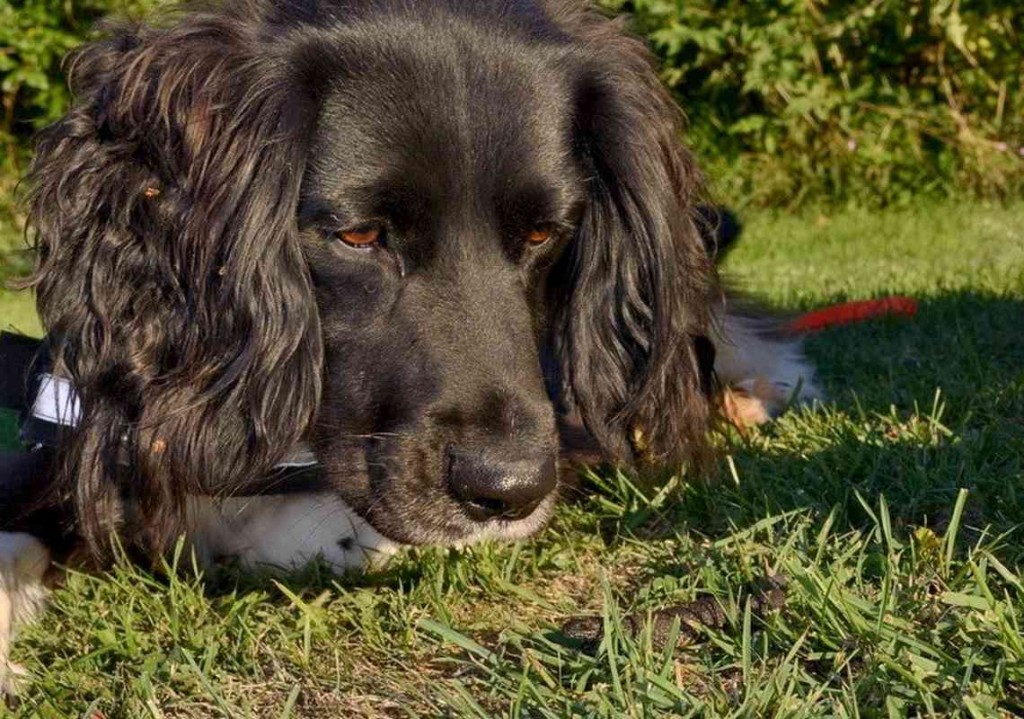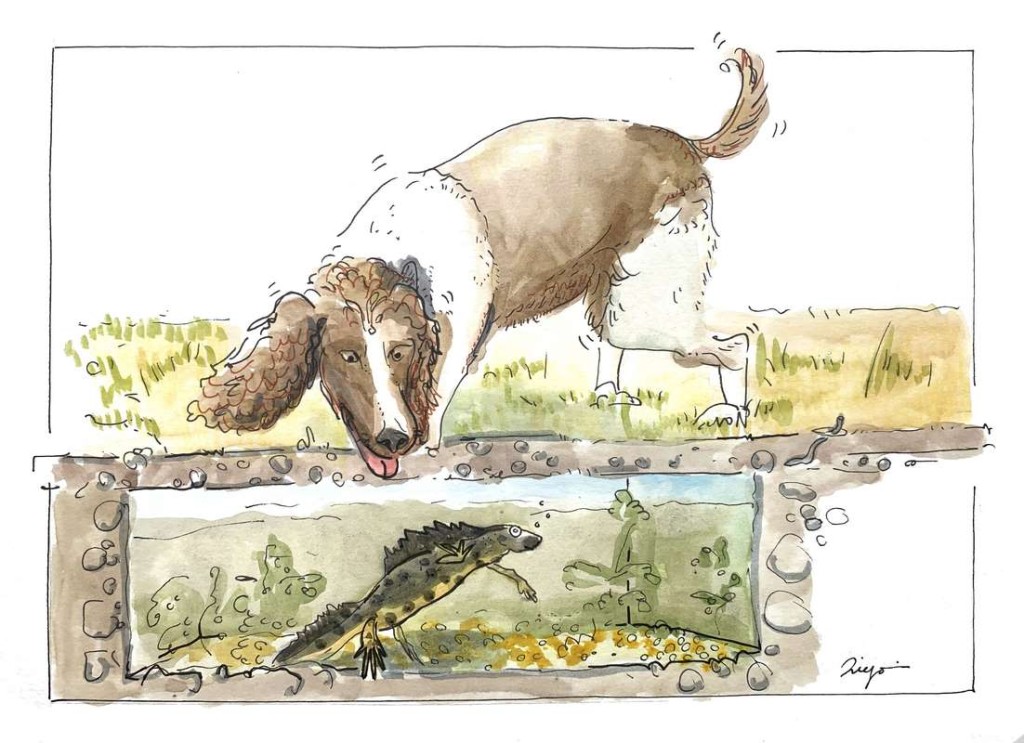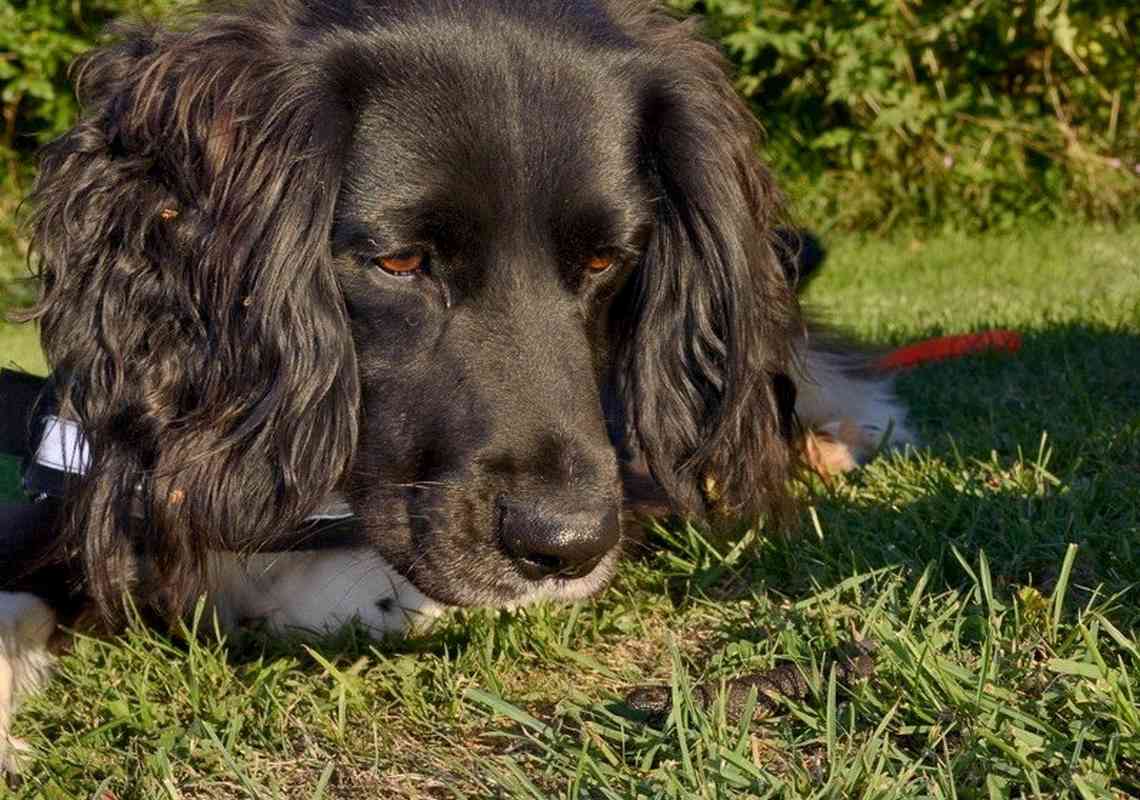
A super skilled sniffer dog called Freya is helping to track down highly-endangered great crested newts in an attempt to save the species.
The six-year-old English springer spaniel’s powerful nose can sniff out the semi-aquatic creatures even when they are hiding underground, say scientists who found that Freya was able to locate the newts 87% of the time.
The great crested newt is a species of special conservation concern across the UK as well as central and northern Europe.
While much is known about their life in the water, little is known about their behaviors on land, as they’re often underground and out of sight in mammal burrows or rocky crevices. By being so hidden, it’s difficult to gather data about them.
Great crested newts breed in ponds and spend the majority of their lives either in woodland, grassland, freshwater, wetlands, or farmlands.
They have black warty skin with a striking orange stomach and can be found across lowland England and Wales, but due to a loss of ponds across the years, the UK populations have fallen accordingly.
Freya was sent out to find how environmental factors specific to great crested newts might affect their detectability.
She was tested to see whether she could identify the newts at a range of distances and in different types of land, including sandy or clay soil either with or without vents, which are present in mammal-like burrows.
While she had two false positives during the first run-through, she had an 87% success rate overall.
OTHER UNLIKELY CONSERVATIONISTS: Island is Wonderland for Penguins Once Again After Dog Helps Eradicate 300,000 Invasive Rabbits
She was also able to detect newts in both sandy and clay-vented and unvented soils with high accuracy.
Over 128 trials, published together in PLoS One, she showed an 88% success rate, with the 12% of false calls generally being false positives.

Freya was significantly faster at detecting great crested newts in vented soil versus unvented soil, naturally because more scent-carrying air would be leaving the burrows.
Study author Nikki Glover believes other dogs would likely require significant training to achieve success rates as high as Freya, with accuracy also depending on the specifics of the detection site.
MORE INTERESTING SCIENCE: 10-year-old’s Backyard Discovery Reveals ‘Mind-blowing’ Interaction Between Plants and Insects
“This pioneering research shows how detection dogs can be a valuable addition to the current toolbox used to locate threatened amphibian species, particularly those using subterranean shelters,” said Ms. Glover, a research student at Salford University.
SHARE This Scientist Spaniel And Their Amazing Results At Newt Finding…




















